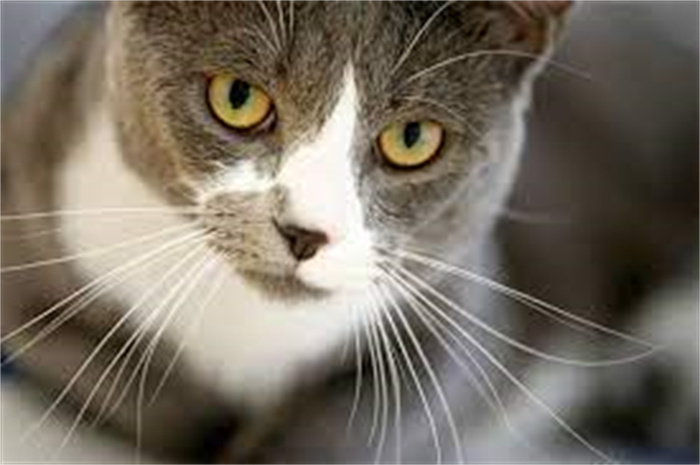Can You Use Dog Shampoo On Cats, is Safe?
No, don’t use shampoo for dogs on cats.
You might not think you’ll ever need to bathe your cat because they are such meticulous self-groomers, but there will be occasions when your feline friend needs a bathe. For that you should know how to bathe a cat is the first step. And can you use your own shampoo or do you need cat shampoo? Even can you use dog shampoo on cats if you have a dog?

Is safe to use dog shampoo on cat?
No, it is not safe; in fact Dog shampoo could actually be toxic for cats. It’s important to use a shampoo designed exclusively for cats when giving your feline friend a bath.
Cat shampoo is undoubtedly the greatest product to use when giving a cat a wash. After all, it was made especially with your cuddly cat in mind. Avoid using shampoos that aren’t made for cats because you don’t want your cat to consume any poisonous substances during the wash and you definitely don’t want to use a product that could injure them.
Related: 6 Best Dry Shampoo For Cats

Same is the case with kittens, because they are sensitive to the same substances, kittens’ skin has a pH close to that of cats. Due of their small size, you need take extra precautions to ensure that the shampoo doesn’t contain any harmful ingredients. It’s also important to consider if a kitten truly needs to be bathed; given their small size and propensity for hypothermia, it’s generally not a good idea to get them wet. In general, wiping a kitten down with a damp cloth instead of giving them a bath is preferable.
Why you shouldn’t use dog shampoo on cats
From a medical standpoint, cats differ from dogs in a number of ways, including how they respond to grooming products, particularly those designed to treat parasites. Use of a dog shampoo that has flea-repelling chemicals could endanger your cat. International Cat Care warns that while many of the components in flea-killing dog shampoos and treatments are acceptable for dogs, they can be extremely poisonous to cats.
As per International Cat Care, “cat liver lacks certain proteins (enzymes) that break down some chemicals into harmless forms, meaning that the chemical can accumulate in the cat’s body and cause serious illness,” permethrin is particularly hazardous for cats. The chemical pyrethrin, which originates from the chrysanthemum flower, is now available in synthetic form as permethrin. Some cat treatments may contain this substance in very small doses, but it’s best to stay away from them all.

The use of dog shampoo on cats has two main drawbacks.
- The possibility of cat-toxic chemicals in dog shampoos. Permethrin and essential oils are typical shampoo chemicals that are poisonous to cats. A topical pesticide called permethrin is frequently included in dog flea shampoos and spot-ons, but cats can be incredibly harmed by some essential oils included in dog shampoos.
- Cats, on the other hand, are more sensitive to essential oils and might react to even small amounts when applied topically or inhaled. The likelihood of an issue is also increased by the fact that cats are meticulous about grooming and will lick and consume any residue left on their skin.
- The skin pH of dogs and cats differs, which is the other major issue with using dog shampoo on cats. Therefore, shampoos made for dogs won’t be the appropriate pH for cat skin. Even though it’s unlikely to have a significant effect on its own, using this frequently can aggravate sore skin and make the issue worse.

While some dog shampoos may be quite dangerous for cats, not all of them will be, therefore it’s important to read the ingredients before using a dog wash on your cat.
Alternatively, you can check with your veterinarian to make sure the contents are acceptable for cats before applying any dog product to your cat. Many pet shampoos are suitable for both dogs and cats or have cat-specific formulations. Before giving your cat a bath with a product, make sure the label specifies it is safe for cats.
What is the Difference Between a Cat’s Skin and a Dog’s Skin?
The largest organ in the body, the skin serves a variety of purposes including adornment, thermoregulation, immunological defence, sensory perception, generation of vitamin D, and serving as a barrier between an animal and its surroundings. Along with all of these critical roles and diseases that directly affect it, the skin can also be a window into pathologic processes originating from inside organs.

The skin serves as the primary organ of communication between the animal and its surroundings. Although the components of the skin exhibit striking species-dependent anatomic changes, their basic functions remain largely same across all animals. In both dogs and cats, the majority of the body is covered in a varyingly dense hair coat that varies depending on the species and breed.
Several feline and canine breeds, including Devon rex cats, Chinese crested dogs, Mexican hairless dogs, and Abyssinian dogs, lack it entirely or partially. In addition to acting as an extra mechanical and physical barrier, hairs also help regulate body temperature. The hair coat itself frequently plays a role in cutaneous problems and serves as a crucial mirror for illnesses inside the body. On the other side, it makes the skin itself more difficult to see clinically.

According to species, breed, and body part, the thickness of the skin can range from 0.4 to 2 mm in cats and from 0.4 to 5 mm in dogs. The back and dorsal neck have the thickest skin, and the belly and inguinal and axillary areas have the thinnest skin. From proximal to distal extremities, its thickness also diminishes.
Skin differences between dogs, cats and humans
According to their anatomical location, histologic characteristics of canine and feline skin are described in contrast to the human integument are:
- 1. Dermis
- 2. Sebaceous glands
- 3. Sweat glands
- 4. Hair follicles
- 5. Basement membrane zone
Back and dorsal neck
The back and dorsal neck have the thickest skin, and the belly and inguinal and axillary areas have the thinnest skin. But usually epidermis, dermis, and hypodermis are the three layers that make up the skin. The keratinocytes (scale-like cells), melanocytes (pigment-producing cells), and Langerhans cells (immune surveillance cells) make up the epidermis, the top layer of skin.

Epidermis
In the epidermis, keratinocytes are arranged in layers. The stratum basale, which is the deepest one, is made up of a single row of germinative keratinocytes and melanocytes, which are cells that are actively growing. Intercellular connections and Langerhans are present in the stratum spinosum, the layer below stratum basale, which sets it apart from the latter. The outermost epidermis layer, the stratum corneum, which is formed of keratinocytes in their maximal differentiation stage (scale) interspersed in a lipid (oily) matrix, is next, followed by the stratum granulosum.
Dermis
The layer beneath the epidermis, the dermis, is made up of a conjunctive matrix that contains collagen, reticular, and elastic fibres. The epidermal appendages (hair, nails, sebum, and sweat glands), arrector pili muscles, blood vessels, and fibroblasts make up the dermis’ cellular structure, which also includes mast cells, histiocytes, and epidermal appendages.
Subcutaneous tissue
The subcutaneous tissue, or hypodermis, offers protection and support against physical stress. Adipocytes, or fat cells, are dotted throughout the loose connective tissue and elastic fibres that make up this structure.

Hair follicles
The hair follicles have cycles of activity that lead to the growth of hair. A new hair is created during the active growth phase known as anagen. In the catagen stage, hair growth stops and the follicle’s base begins to degenerate. The hair is shed during the telogen stage of the follicular cycle in order for new hair to begin to grow.
Some dog breeds’ hair cycle activity is significantly correlated with temperature variation and photoperiodism (day duration), which causes a drop in hair density during the warmer months and aids in the reduction of body heat in these animals. Depending on how long a hair cycle is, hair might be short or long.
Skin
The skin of a cat is thicker and has a lower pH than that of a dog. Additionally, the pH level of cat skin is lower than that of a dog. The short explanation is that a cat has skin that is more sensitive than a dog. While the skin of a dog and a cat may have similar functions, their variances prevent the use of the same items on both. If cats are bathed using items designed for dogs, chemicals can easily permeate their skin. A cat’s skin might become dry from using dog shampoo.
These traits make dermatological issues one of the conditions that veterinary hospitals see the most frequently.
What distinguishes dog shampoo from cat shampoo?
While canine grooming products frequently contain ingredients that could be hazardous to cats, cat shampoos are designed for more acidic skin pH values. This is the key difference between shampoos for cats and dogs.
How to find the best shampoo for your cat?
Choose cat shampoos with calming and all-natural ingredients. Stay away from shampoos that have harsh chemicals, synthetic perfumes, or dyes. Choose a moderate, odorless, non-medicated cat shampoo when determining what to use to bathe your cat. Before applying a medicated shampoo to your cat, seek advice from your veterinarian if one is necessary.

Look for organic components that are known for their calming and moisturizing qualities, such as aloe Vera and coconut oil. Here are a few additional things to consider:
- 1. Select a conventional shampoo, a 2-in-1 formula, or a waterless formula.
- 2. To encourage a supple and shiny coat, look for natural ingredients.
- 3. To get rid of fleas, ticks, or mites, choose a treatment shampoo.
- 4. Use a hypoallergenic formula on sensitive-skinned cats.
Always read the labels and look up ingredients that you’re not familiar with in order to lower the possibility of giving your cat a bath that contains toxic elements. This also applies to substitutes for cat shampoos.
Can you use dog flea shampoo on cats?
Although using dog flea shampoo on cats can seem like a nice idea, it is actually not advised. Since dogs have a different pH balance than cats, dog flea shampoo is made to be more abrasive. Cats may experience skin irritations and other issues as a result of this pH variation.
Can you use waterless dog shampoo on cats?
The answer is that waterless dog shampoo can be used on cats without risk. In actuality, it may be a fantastic solution to keep your cat clean and odor-free in between bathing. Waterless shampoos are mild and won’t remove your cat’s coat’s natural oils. They are also practical and simple to use. Just apply the shampoo to your cat’s fur, give it a little massage, and then use a towel to remove any extra. Without the strain of a traditional bath, your cat will be clean and fresh.

But we do not recommend it in the sense if your cat licks it on its skin and get harmful particles in its stomach it can upset it.
Human shampoo is ok for cats?
No, not. Preventive Vet advises against using human shampoo on cats or dogs, as it can “cause inflammation and irritation of your pet’s skin.” This furthers the itching and raises the risk of skin infections. Because human shampoo is made for people, whose pH levels (the scale of acidic to basic substances) differ from cats’, these adverse skin reactions happen.
Parabens, sulphates, isopropyl alcohol, coal tar, and certain preservatives are some of the toxic components in human shampoo. Some of them can injure the kidneys and liver. For cats, even baby shampoo can be too abrasive.

Can you use oatmeal dog shampoo on cats?
It’s safe to use the oatmeal pet shampoo on animals as young as six weeks old. Cats and dogs can use oatmeal shampoo as well as other antibacterial and antifungal shampoos.
Can you use hartz dog shampoo on cats?
No! Dog and cat flea/tick shampoos contain separate chemicals and cannot be switched. And it should never be used on both animals at the same time. It is possible to experience lethargy, skin rash or infection, convulsions, and even demise.
Summary
Some dog shampoos may be gentle enough to safely bathe your cat, even though not all dog shampoos may be the best choice. Some pet shampoos may clean both dogs and cats thoroughly and are suitable for both. The other compounds it contains and the pH range it supports all play a role.
When applying dog shampoo on cats, there are a few considerations to make. First, verify sure the shampoo is made for your particular pet. If your cat has fleas, make sure you use a cat-specific flea shampoo. Finally, keep in mind that cats can safely use waterless dog shampoo and oatmeal shampoo. You may contribute to the continued health and happiness of your cat by adhering to these basic rules.

